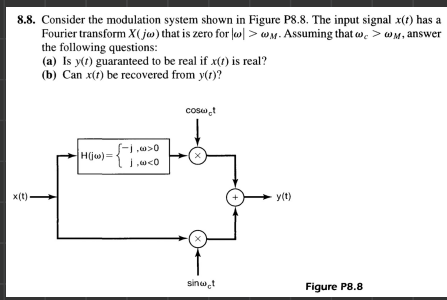
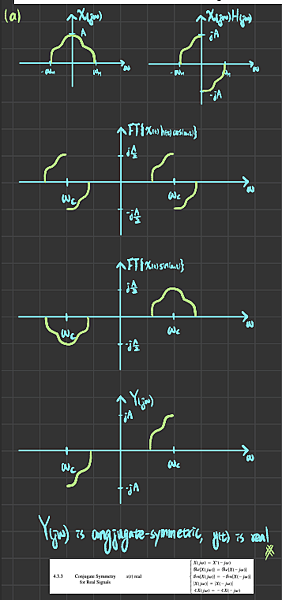
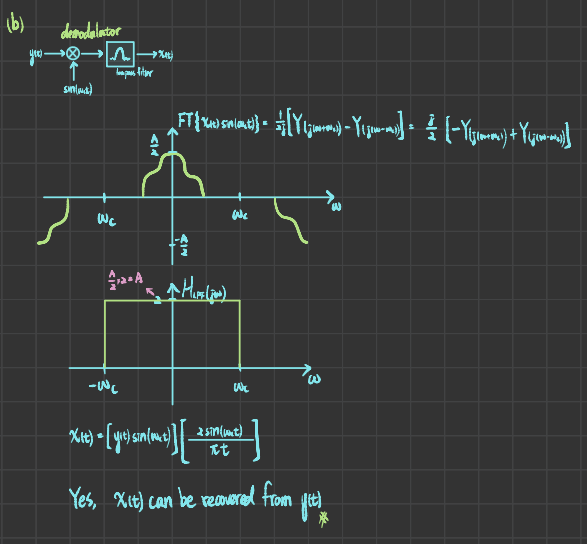
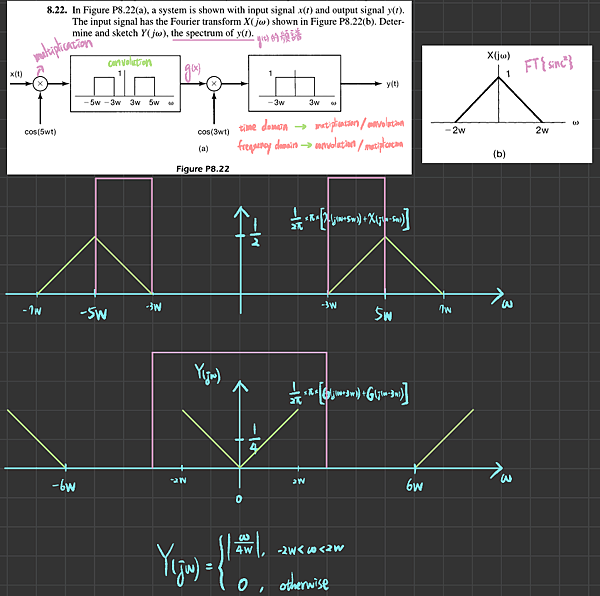
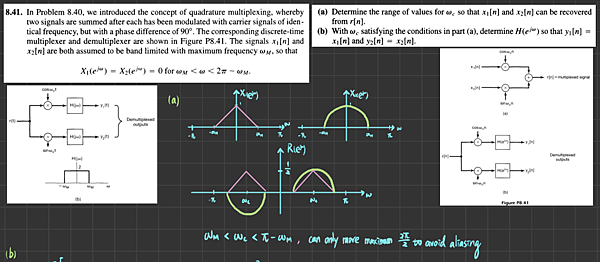

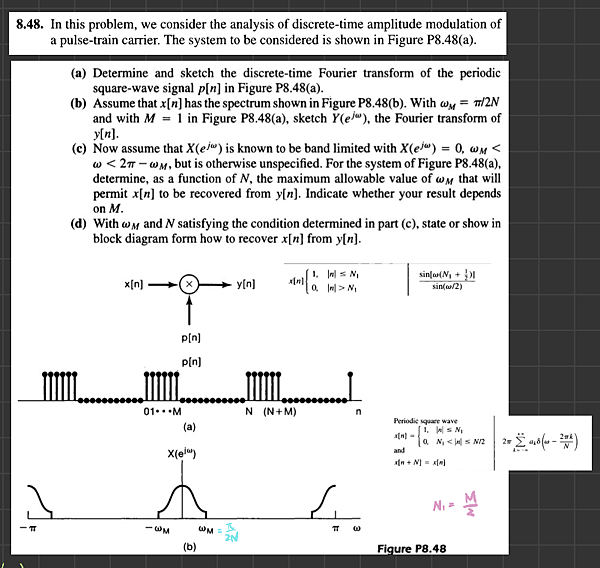
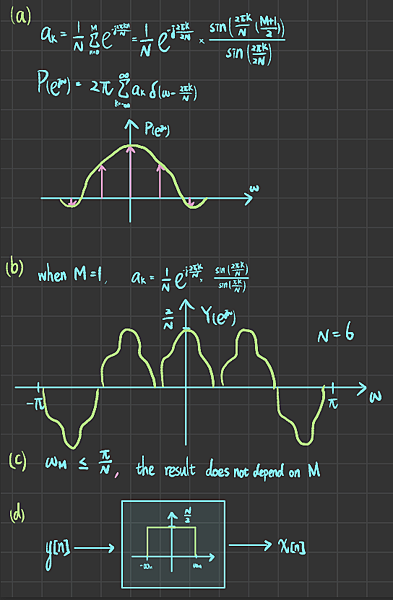
8.8. Consider the modulation system shown in Figure P8.8. The input signal x(t) has a Fourier transform X(jω) that is zero for ∣ω∣>ωM. Assuming that ωc>ωM, answer the following questions: (a) Is y(t) guaranteed to be real if x(t) is real? (b) Can x(t) be recovered from y(t) ?
8.22. In Figure P8.22(a), a system is shown with input signal x(t) and output signal y() The input signal has the Fourier transform X(j) shown in Figure P8.22(b). Deter- mine and sketch Y(jo), the spectrum of y(1). x(t) y(t) -5w-3w 3w 5w -3w 3w ω cos(5wt) cos(3wt) Figure P8.22 632 Communication Systems Chap8 X(jo) -2w 2w Figure P8.22 Continued
8.41. In Problem 8.40, we introduced the concept of quadrature multiplexing, whereby two signals are summed after each has been modulated with carrier signals of iden- tical frequency, but with a phase difference of 90°. The corresponding discrete-time multiplexer and demultiplexer are shown in Figure P8.41. The signals xı[n] and x2[n] are both assumed to be band limited with maximum frequency wm, so that X;(ejw) = x2(ej“) = 0 for WM <w < 271 - wm. = = coswet H(jo) y(t) r(t) Demultiplexed outputs H(jw) y(t) sinct H(jw) -WM WM (b) Figure P8.40 Continued Coswon X,[n] r[n]=multiplexed signal X2[n] sinon (a) COS Hels) y, [n] r[n] Demultiplexed outputs H() y In] sinwon (b) Figure P8.41 040 (a) Determine the range of values for Wc so that xi[n] and x2[n] can be recovered from r[n]. (b) With we satisfying the conditions in part (a), determine H(ejw) so that yı[n] xi[n] and y2[n] x2[n].
8.48 In this problem, we consider the analysis of discrete-time amplitude modulation of a pulse-train Carrier. The system to be considered is shown in Figure P8.48 (a).
(a) Determine and sketch the discrete-time Fourier transform of the periodic square-wave signal p[n] in Figure P8.48(a)
(b) Assume that x[n] has the spectrum shown in Figure P8.48(b). With ωm=π/2N and with M=1 in Figure P8.48(a), sketch Y(ejω1, the Fourier transform of \. y⌈n]
(c) Now assume that X\(ef(u) ) is known to be band limited with X(ρ′′′)−0.ωM<. ω<2π−ωM, but is otherwise unspecified. For the system of Figure P8.48 (a) determine, as a function of N, the maximum allowable value of ωM that will permit x[n] to be recovered from y[n]. Indicate whether your result depends on M
(d) With ωM and N satisfying the condition determined in part (c), state or show 1 in block diagram form how to recover x|n| from y[n]





 留言列表
留言列表


